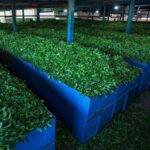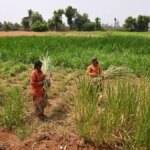Main Points In Hindi (मुख्य बातें – हिंदी में)
-
कनाडा की कृषि-खाद्य क्षेत्र की चिंताएँ: लेख में कहा गया है कि कनाडा के कृषि-खाद्य क्षेत्र की असली चिंता अमेरिकी नीतियों में बदलाव नहीं, बल्कि ओटावा द्वारा उठाए जा रहे कदम हैं जो खाद्य सुरक्षा, आपूर्ति प्रबंधन और किसानों की भलाई को प्रभावित करते हैं।
-
खाद्य मुद्रास्फीति और व्यापार संबंध: ट्रम्प के पहले कार्यकाल के दौरान खाद्य मुद्रास्फीति दर में वृद्धि हुई, और यूएसएमसीए के तहत कन ada के अमेरिका में कृषि-खाद्य निर्यात में बढ़ोतरी हुई, जिससे कनाडा की अमेरिकी बाजार पर अधिक निर्भरता बढ़ी।
-
आपूर्ति प्रबंधन प्रणाली के दबाव: ट्रम्प ने कनाडा की आपूर्ति प्रबंधन प्रणाली पर दबाव डाला, जिससे अमेरिकी उत्पादों को कनाडाई बाजारों में अधिक पहुंच मिली। इसके परिणामस्वरूप, कनाडाई सरकार को अमेरिकी किसानों के लिए अधिक समर्थन और सब्सिडी देनी पड़ सकती है।
-
विपणन प्रतिस्पर्धा का मुद्दा: कनाडा को अपने कृषि-खाद्य क्षेत्र की प्रतिस्पर्धात्मकता बनाए रखने के लिए तत्काल कार्रवाई करनी होगी, क्योंकि अमेरिका में कृषि-खाद्य उत्पादों की कीमतों में तेजी से वृद्धि से कनाडाई उत्पादकों को नुकसान हो रहा है।
- ओटावा की जिम्मेदारी: लेख का निष्कर्ष यह है कि कनाडाई लोगों को ओटावा के कार्यों पर ध्यान केंद्रित करना चाहिए ताकि कृषि-खाद्य क्षेत्र की सुरक्षा और समर्थन सुनिश्चित किया जा सके, बजाय इसके कि अमेरिकी राजनीतिक परिदृश्य पर ध्यान केंद्रित किया जाए।
Main Points In English(मुख्य बातें – अंग्रेज़ी में)
Here are the main points from the text regarding the state of Canada’s agricultural and food sector in the context of changing U.S. policies under President Trump:
-
Focus on Domestic Challenges: While concerns about U.S. policies under Trump are prevalent, the main issue for Canada’s agricultural sector lies in the actions taken by the Canadian government, particularly in terms of food security, supply management, and the well-being of farmers.
-
Impact of U.S.-Canada Trade Agreements: Trump’s tenure saw significant changes in trade relationships, including the USMCA agreement, which increased Canada’s agricultural exports to the U.S. by nearly 57%. However, this dependency on the U.S. market poses risks for Canada’s agriculture due to potential shifts in U.S. policy.
-
Pressure on Canada’s Supply Management System: There is ongoing pressure from the U.S. to grant more access to Canadian markets for American products, particularly in the dairy sector. The new Bill C-282 aims to protect Canadian supply-managed sectors, but its implications for trade negotiations could be significant.
-
Competitiveness Challenges: Canada’s agricultural sector faces increasing challenges, with wholesale food prices rising faster than in the U.S. By failing to act promptly to enhance competitiveness, Canadian retailers may increasingly rely on cheaper American imports, affecting local producers.
- Call for Government Action: The article emphasizes the need for Canadian policymakers to focus on strengthening the agricultural sector domestically rather than being overly concerned with U.S. policies. The resilience and competitiveness of Canada’s food system depend on proactive measures taken by the Canadian government.


Complete News In Hindi(पूरी खबर – हिंदी में)
जबकि कनाडाई ट्रम्प के तहत अमेरिकी नीति में बदलाव के बारे में चिंतित हैं, जब कृषि-खाद्य क्षेत्र को जोखिम में डालने की बात आती है तो ओटावा खलनायक है।
कोई गलती न करें, कनाडा के कृषि-खाद्य क्षेत्र के लिए वास्तविक मुद्दा यह नहीं है कि वाशिंगटन में क्या हो रहा है – यह यहां घर पर क्या हो रहा है।
जबकि कई कनाडाई इस बात को लेकर चिंतित हैं कि निर्वाचित राष्ट्रपति डोनाल्ड ट्रम्प की वापसी के साथ अगले चार वर्षों में क्या होगा, ध्यान इस बात पर होना चाहिए कि क्या ओटावा हमारी खाद्य सुरक्षा, आपूर्ति प्रबंधन और हमारे किसानों की भलाई के लिए पर्याप्त प्रयास कर रहा है। कनाडा के कृषि-खाद्य क्षेत्र के भविष्य के बारे में चिंतित लोगों के लिए, वास्तविकता विनाश के बारे में कम और प्रतिस्पर्धात्मकता बनाए रखने के लिए डेटा-संचालित रणनीतियों के बारे में अधिक हो सकती है।
सबसे पहले, आइए ट्रम्प के पहले कार्यकाल के दौरान खाद्य मुद्रास्फीति की जाँच करें। 2016 में, जब ट्रम्प पहली बार चुने गए थे, तो राजनीतिक माहौल समान रूप से तीव्र था, संभावित टैरिफ, पुन: बातचीत किए गए व्यापार सौदों और अमेरिका-प्रथम नीति के बारे में चिंताएं जो कनाडा के साथ अमेरिकी संबंधों को प्रभावित कर सकती थीं।
पद संभालने के बाद, ट्रम्प को अमेरिकी खाद्य मुद्रास्फीति दर माइनस चार प्रतिशत विरासत में मिली – एक ऐसा आंकड़ा जो उपभोक्ताओं के लिए फायदेमंद लग सकता है, लेकिन कम खाद्य कीमतें अक्सर कॉर्पोरेट निवेश को हतोत्साहित करती हैं और उद्योग में नवाचार को रोकती हैं। उनके कार्यकाल के दौरान, खाद्य मुद्रास्फीति अंततः बढ़कर चार प्रतिशत हो गई, लेकिन आम तौर पर प्रबंधनीय रही, औसतन 1.5 और 2.5 प्रतिशत के बीच।
कनाडाई वस्तुओं पर टैरिफ की व्यापक आशंकाओं के बावजूद, ऐसा कोई उपाय नहीं किया गया जिससे कनाडा की खाद्य आपूर्ति श्रृंखला बाधित हो, जो लचीली साबित हुई।
फिर संयुक्त राज्य अमेरिका-मेक्सिको-कनाडा समझौता (यूएसएमसीए) आया, जो ट्रम्प का ऐतिहासिक व्यापार समझौता था, जिसने पूरे उत्तरी अमेरिका में वाणिज्य को नया आकार दिया। 2020 में अनुमोदित, ट्रम्प के कार्यालय में अंतिम वर्ष, इस समझौते के कारण कनाडा के अमेरिका में कृषि-खाद्य निर्यात में लगभग 57 प्रतिशत की वृद्धि हुई, जो पिछले साल लगभग 60 बिलियन डॉलर तक पहुंच गया। पहले, ओबामा प्रशासन के तहत, कनाडा का लगभग 48 प्रतिशत कृषि-खाद्य निर्यात अमेरिकी बाजार में जाता था, लेकिन आज, इन निर्यातों का लगभग 60 प्रतिशत दक्षिण की ओर बहता है।
अमेरिकी बाजार पर यह भारी निर्भरता एक आशीर्वाद और अभिशाप दोनों है – जबकि कनाडा के कृषि-खाद्य क्षेत्र को विशाल अमेरिकी बाजार तक पहुंच से लाभ होता है, यह अर्थव्यवस्था को अमेरिकी नीति में बदलाव के प्रति अधिक संवेदनशील बनाता है। अपने अमेरिका-प्रथम दृष्टिकोण के लिए प्रसिद्ध, ट्रम्प इस निर्भरता के बारे में अच्छी तरह से जानते हैं और उन्होंने व्यापार वार्ता में इसका लाभ उठाया है।
ट्रम्प की नीतियों ने कनाडा को विशेष रूप से कृषि-खाद्य क्षेत्र में अमेरिका के साथ घनिष्ठ वाणिज्यिक संबंधों की ओर आकर्षित किया। अपने पहले कार्यकाल के दौरान, ट्रम्प ने कनाडा पर अपनी आपूर्ति प्रबंधन प्रणाली पर रियायतें देने के लिए भी दबाव डाला, जिससे डेयरी जैसे उत्पादों के लिए कनाडाई बाजारों तक अमेरिका की पहुंच बढ़ गई। हाल ही में, कनाडा की सीनेट ने बिल सी-282 की आलोचना की, जो भविष्य के व्यापार सौदों में डेयरी, अंडे और पोल्ट्री सहित आपूर्ति-प्रबंधित क्षेत्रों की रक्षा करेगा। आलोचकों ने चेतावनी दी है कि अगर सी-282 को बरकरार रखा गया तो यह ट्रम्प प्रशासन के लिए आपूर्ति प्रबंधन को और भी बड़े लक्ष्य में बदल सकता है।
लेकिन कोई गलती न करें, ट्रम्प के दूसरे कार्यकाल के तहत, कनाडा को अमेरिकी उत्पादकों को अधिक बाजार पहुंच प्रदान करने के लिए अतिरिक्त दबाव का सामना करना पड़ेगा, और कनाडाई करदाताओं को प्रभावित क्षेत्रों के लिए और भी बड़ी सब्सिडी का बोझ उठाना पड़ सकता है। आपूर्ति प्रबंधन बोर्ड इन भुगतानों को संभावित नुकसान के लिए “मुआवजे” के रूप में परिभाषित कर सकते हैं, लेकिन वास्तव में, ये सब्सिडी हैं जो आवश्यक कोटा समायोजन से उत्पन्न होती हैं।
हालाँकि, बड़ी चुनौती कनाडा की प्रतिस्पर्धी कृषि-खाद्य क्षेत्र को बनाए रखने की क्षमता में निहित है। ट्रम्प के दूसरे कार्यकाल के एजेंडे में ऊर्जा लागत में कटौती, नियामक लालफीताशाही को कम करने, करों को कम करने और 2 ट्रिलियन डॉलर के करीब फार्म बिल के माध्यम से अमेरिकी किसानों को बढ़ावा देने का वादा किया गया है। 2019 के बाद से, कनाडा की थोक खाद्य कीमतें अमेरिका की तुलना में लगभग 40 प्रतिशत तेजी से बढ़ी हैं, जिससे कनाडाई उत्पादकों को काफी नुकसान हुआ है। कनाडा की प्रतिस्पर्धात्मकता बढ़ाने के लिए ओटावा की त्वरित कार्रवाई के बिना, कनाडाई किराना विक्रेता उपभोक्ताओं के लिए कीमतें कम रखने के लिए अधिक किफायती अमेरिकी आयात की ओर रुख कर सकते हैं।
अंत में, जबकि ट्रम्प की वापसी से कुछ बदलाव हो सकते हैं, कनाडाई लोगों को हमारे कृषि-खाद्य क्षेत्र के समर्थन में ओटावा के कार्यों – या निष्क्रियताओं – पर अपना ध्यान केंद्रित करना चाहिए। ट्रम्प की नीतियों के परिणामस्वरूप वास्तव में हमारे किराने की दुकानों में अमेरिकी उत्पादों की अधिक उपस्थिति हो सकती है, लेकिन वास्तविक समाधान यह सुनिश्चित करने में निहित है कि कनाडा का कृषि-खाद्य क्षेत्र मजबूत और प्रतिस्पर्धी बना रहे। दूर स्थित व्हाइट हाउस पर ध्यान केंद्रित करने के बजाय, कनाडाई लोग पार्लियामेंट हिल पर घर के करीब लिए गए निर्णयों की जांच करने में अधिक समझदार हो सकते हैं।
तल – रेखा? ट्रम्प का पुनः चुनाव दुनिया के अंत का संकेत नहीं है, और किसी भी संभावित चुनौती को डेटा पर ध्यान केंद्रित करके प्रबंधित किया जा सकता है। वास्तविक चिंता वाशिंगटन की नहीं बल्कि कनाडा के कृषि-खाद्य क्षेत्र के स्वास्थ्य की सुरक्षा और समर्थन के प्रति हमारी सरकार की प्रतिबद्धता की है।
खाद्य वितरण और नीति में विशेषज्ञता रखने वाले कनाडाई प्रोफेसर और शोधकर्ता डॉ. सिल्वेन चार्लेबोइस, डलहौजी विश्वविद्यालय में एग्री-फूड एनालिटिक्स लैब के वरिष्ठ निदेशक और द फूड प्रोफेसर पॉडकास्ट के सह-मेजबान हैं। खाद्य कीमतों, कृषि रुझानों और वैश्विक खाद्य आपूर्ति श्रृंखला पर उनकी अंतर्दृष्टि के लिए उन्हें अक्सर मीडिया में उद्धृत किया जाता है।
SaskToday.ca पर दी गई टिप्पणियों का उद्देश्य हमारे पाठकों के लिए विचारोत्तेजक सामग्री प्रदान करना है। व्यक्त की गई राय लेखकों की अपनी हैं। योगदानकर्ताओं के लेख या पत्र आवश्यक रूप से SaskToday.ca के किसी कर्मचारी की राय को प्रतिबिंबित नहीं करते हैं।
Complete News In English(पूरी खबर – अंग्रेज़ी में)
While Canadians are worried about shifts in U.S. policy under Trump, Ottawa is the real villain when it comes to putting the agricultural and food sector at risk.
Make no mistake, the real issue for Canada’s agricultural and food sector isn’t what’s happening in Washington, but rather what’s occurring at home.


Many Canadians are anxious about what the next four years will look like with Donald Trump back in power. However, the focus should be on whether Ottawa is doing enough to ensure our food security, supply management, and the well-being of our farmers. For those concerned about the future of Canada’s agriculture and food sector, the reality may be less about impending doom and more about data-driven strategies to maintain competitiveness.
Let’s first look at food inflation during Trump’s first term. In 2016, when Trump was first elected, the political environment was equally intense due to concerns over potential tariffs, renegotiated trade deals, and “America-first” policies that could affect U.S.-Canada relations.
Upon taking office, Trump inherited a U.S. food inflation rate of minus four percent—a figure that might seem beneficial for consumers, but lower food prices typically discourage corporate investment and stifle innovation within the industry. By the end of his term, food inflation had risen to about four percent but remained generally manageable, averaging between 1.5 and 2.5 percent.
Despite widespread fears about tariffs on Canadian goods, no action was taken that disrupted Canada’s food supply chain, which proved quite resilient.
Then came the United States-Mexico-Canada Agreement (USMCA), Trump’s landmark trade agreement that reshaped commerce across North America. Approved in 2020 during Trump’s final year in office, the deal led to a nearly 57 percent increase in Canada’s agricultural and food exports to the U.S., reaching around $60 billion. Previously, under the Obama administration, about 48 percent of Canada’s agricultural food exports went to the U.S., but today nearly 60 percent of these exports flow southward.
This heavy reliance on the U.S. market is both a blessing and a curse. While Canada’s agricultural and food sector benefits from access to the vast American market, it also makes the economy more vulnerable to shifts in U.S. policy. Trump, known for his America-first approach, is well aware of this reliance and has leveraged it in trade negotiations.
Trump’s policies have pushed Canada closer to the U.S. commercially, especially in the agricultural and food sectors. During his first term, he pressured Canada to make concessions on its supply management system, increasing U.S. access to Canadian markets for products like dairy. Recently, the Canadian Senate criticized Bill C-282, which aims to protect supply-managed sectors, including dairy, eggs, and poultry, in future trade deals. Critics warn that preserving C-282 could make supply management an even bigger target for the Trump administration.
However, under Trump’s second term, Canada will have to face increased pressure to provide U.S. producers with more market access, resulting in a heavier subsidy burden on Canadian taxpayers for affected sectors. The supply management board may refer to these payments as “compensation” for potential losses, but in reality, they are subsidies generated from necessary quota adjustments.
The bigger challenge lies in Canada’s ability to maintain a competitive agricultural and food sector. Trump’s second-term agenda promises to cut energy costs, reduce regulatory red tape, lower taxes, and support U.S. farmers through a nearly $2 trillion farm bill. Since 2019, Canada’s wholesale food prices have risen about 40 percent faster than those in the U.S., significantly hurting Canadian producers. Without swift action from Ottawa to enhance competitiveness, Canadian grocery retailers may turn to more affordable U.S. imports to keep prices low for consumers.
In conclusion, while Trump’s return could bring some changes, Canadians should focus on Ottawa’s actions— or lack thereof—supporting our agricultural and food sector. The presence of more American products in our grocery stores as a result of Trump’s policies is a short-term issue. The real solution lies in ensuring that Canada’s agricultural and food sector remains strong and competitive. Instead of fixating on the distant White House, Canadians would be wiser to scrutinize the decisions made closer to home on Parliament Hill.
The bottom line? Trump’s reelection is not an apocalypse, and any potential challenges can be managed with a data-focused approach. The real concern is not Washington, but our government’s commitment to safeguarding and supporting the health of Canada’s agricultural and food sector.
Source link




